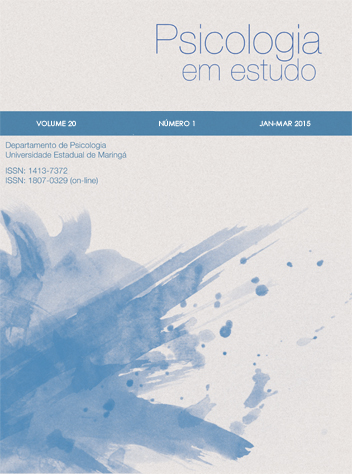Diálogos de Lacan na reinvenção do inconsciente
Abstract
Este artigo tem como objetivo apresentar e explicitar três momentos da interlocução de Jacques Lacan com o estruturalismo em seu percurso de reinvenção do inconsciente. Como metodologia, foram analisados três textos dos teóricos estruturalistas referidos por Lacan: o antropólogo Claude Lévi-Strauss e os linguistas Ferdinand de Saussure e Roman Jakobson. Com o intuito de dimensionar a asserção lacaniana de que “o inconsciente é estruturado como uma linguagem”, este trabalho propõe um percurso de leitura que busca evidenciar em profundidade o diálogo que Lacan manteve com estes autores. Tal proposta é desenvolvida a partir da leitura rigorosa e elaboração de comentários sobre os textos dos autores estruturalistas, com foco na formulação original de seus conceitos e apropriações efetuadas por Lacan. Desse modo, busca-se demonstrar como alguns conceitos propostos pela antropologia estrutural de Lévi-Strauss e pela linguística estrutural de Saussure e Jakobson, uma vez reformulados, constituem os pilares sobre os quais repousam a estrutura do inconsciente lacaniano formalizada no escrito “A instância da letra no inconsciente”.Downloads
Riferimenti bibliografici
Altoé, S., & Martinho, M. H. (2012, junho). A noção de estrutura em psicanálise. Estilos da clínica, 17 (1), 14-25. Recuperado em 15 de Junho, 2013, da SciELO (Scientific Eletrocnic Library On line): www.scielo.br.
Barthes, R. (2007). Elementos de Semiologia (14a ed.). São Paulo: Cultrix. (Trabalho original publicado em 1964).
Coutinho Jorge, M. A. (2005). Fundamentos da psicanálise de Freud a Lacan (Vol. 1). Rio de Janeiro: Jorge Zahar.
Couto, L. F. S., & Souza, M. F. G. (2013). O estruturalismo em Jacques Lacan: da apropriação à subversão da corrente estruturalista no estabelecimento de uma teoria do sujeito do inconsciente. Ágora, 16(2), 185-200. Recuperado em 30 de Setembro de 2014, de http://www.scielo.br/scielo.php?script=sci_arttext&pid=S1516-14982013000200001&nrm=iso&tlng=pt.
Freud, S. (1996). Os chistes e sua relação com o inconsciente. In J. Strachey (Ed. E J. Salomão, Trad.), Edição Standard Brasileira das obras completas. (Vol. 8). Rio de Janeiro: Imago. (Trabalho original publicado em 1905).
Jakobson, R. (2010). Dois aspectos da linguagem e dois tipos de afasia. In Jakobson, R. Linguística e comunicação (pp. 34-62). São Paulo: Cultrix, 2010. (Trabalho original publicado em 1954).
Lacan, J. (1998). A instância da letra no inconsciente ou a razão desde Freud. In Lacan, J. Escritos. (pp. 496-533). Rio de Janeiro: Zahar. (Trabalho original publicado em 1957).
Lacan, J. (1998). Função e campo da fala e da linguagem. In Lacan, J. Escritos. (pp. 238-324). Rio de Janeiro: Zahar. (Trabalho original publicado em 1953).
Lacan, J. (2008). O Seminário – livro III – As psicoses (2a ed.). Rio de Janeiro: Jorge Zahar. (Trabalho original publicado em 1955-1956).
Lacan, J. (1992). O Seminário – livro XVII – O avesso da psicanálise. Rio de Janeiro: Jorge Zahar. (Trabalho original publicado em 1969-1970).
Lacan, J. (1998). O Seminário – livro XI – Os quatro conceitos fundamentais da psicanálise (2a ed.). Rio de Janeiro: Jorge Zahar. (Trabalho original publicado em 1964).
Lacan, J. (1993). Televisão. (A. Quinet, trad.). Rio de Janeiro: Jorge Zahar. (Trabalho original publicado em 1973).
Lévi-Strauss, C. (1975). A eficácia simbólica. Rio de Janeiro: tempo brasileiro. (Trabalho original publicado em 1949).
Manso de Barros, R. (2012). Por que estrutura e psicanálise? In Elia, L., & Manso de Barros, R. (Orgs.) Estrutura e psicanálise. Rio de Janeiro: Cia de Freud.
Melman, C. (2011). A neurose obsessiva no divã de Lacan: um estudo psicanalítico. Rio de Janeiro: Imago.
Roudinesco, E. (2008). Jacques Lacan: esboço de uma vida, história de um sistema de pensamento. São Paulo: Companhia das letras.
Saussure, F. (2006). Curso de Linguística Geral (2a ed.). São Paulo: Cultrix. (Trabalho original publicado em 1916).
Werneck, M. M. F. (2012). O trabalho do mito: diálogos entre Freud e Lévi-Strauss. Ciência e Cultura, 64 (1), 45-47. Recuperado em 05 de Agosto, 2014, de http://cienciaecultura.bvs.br/scielo.php?pid=S0009-67252012000100017&script=sci_arttext.
As opiniões emitidas, são de exclusiva responsabilidade do(s) autor(es). Ao submeterem o manuscrito ao Conselho Editorial de Psicologia em Estudo, o(s) autor(es) assume(m) a responsabilidade de não ter previamente publicado ou submetido o mesmo manuscrito por outro periódico. Em caso de autoria múltipla, o manuscrito deve vir acompanhado de autorização assinada por todos os autores. Artigos aceitos para publicação passam a ser propriedade da revista, podendo ser remixados e reaproveitados conforme prevê a licença Creative Commons CC-BY.
The opinions expressed are the sole responsibility of the author (s). When submitting the manuscript to the Editorial Board of Study Psychology, the author (s) assumes responsibility for not having previously published or submitted the same manuscript by another journal. In case of multiple authorship, the manuscript must be accompanied by an authorization signed by all authors. Articles accepted for publication become the property of the journal, and can be remixed and reused as provided for in theby a license Creative Commons CC-BY.
















